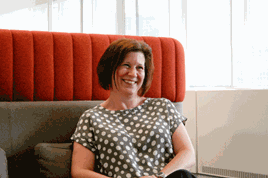Safety is unquestionably a hot topic in the industry. Doing everything possible to remove risk to passengers is quite rightly a priority. But all too often the welfare of the 150,000 other people on the railway - the workforce - isn’t given the same importance.
That is now starting to change. Over the past four years, the industry’s management of the health of the rail workforce has been improving - thanks in no small part to the work of the Office of Rail and Road (ORR).
As well as regula ating safety on the network, the ORR is leading a programme that focuses on worker health. And prioritising it is more than just a moral obligation - it’s good business, too.
In its recent report Better health is happening (see Network News, page 10-11), the ORR showed that while awareness and management of health is improving, instances of worker-related ill-health and the level of respiratory diseases in rail are still high relative to some other industries.
Cue Sharon Mawhood, ORR’s HM Inspector of Railways in the Central Specialist Inspectors’ Team. Mawhood has worked on the railway for the past 12 years, and the Better Health programme has very much been her ‘baby’:
“In 2010, ORR launched what was our first health programme, which was a four-year programme up to 2014, to try and really improve our management of occupational health in the industry,” she explains.
“At that time, we did a baseline report. Where were the gaps in compliance ? What did the industry need to improve?
“We said that at the end of that first programme in 2014, we’d have another look, see what progress had been made, and identify where there were still gaps and where we still needed to improve performance.
“This report really is that look-back at the first health programme, and a forward look to provide a steer on priorities for our second health programme, which runs through to 2019.”
So what are the gaps?
“We’re not specifically focusing on individual things that companies have to do - it’s more themes. There are areas where they have built a lot of strengths, but there are still weaknesses. We’re trying to flush those out and say ‘look, we think you need to do more work in these specific areas - looking at health data, building a competence of rail managers, looking at your own management systems and using RM3 for health , and we want you to focus on these certain key priority areas’.”
What are the main health risk areas?
“Dust is a really good example. I don’t think there was any recognition within the industry until ORR’s health programme that construction dust, and ballast dust in particular, has the potential for being a real health problem.
“Before, it was ‘if the dust is so bad that you can’t actually see the machine, then we’ll do something about it!’ But now there is a real recognition that that’s not good enough, and they need to actually control the dust. You can wet the ballast and keep people out of the dusty areas. There’s been a real step change in terms of awareness and recognition of health. Beyond that, the key areas we want the industry to focus on are musculoskeletal disorders - so things like manual handling, hand-arm vibration syndrome, carcinogens such as asbestos and silica, and diesel engine fumes.”













Login to comment
Comments
No comments have been made yet.